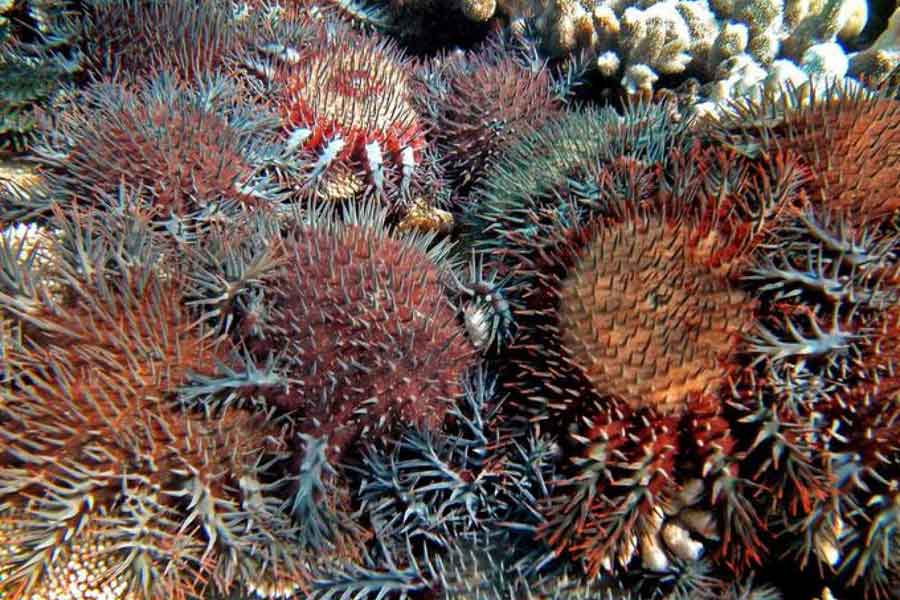
Coral reefs are the most awe-inspiring natural structures that can be found on our planet, but they are also the most delicate. They are made up of tiny coral polyps that deposit their skeletons on the previous polyp’s skeleton, creating their own skeleton that will serve as the base for the next polyp. Most corals grow at an astonishing rate of one centimeter per year. Over the course of centuries, enormous reefs have formed, some of which can be seen from the moon. However, growth is slow, and the polyps are delicate, so anything that attacks them puts the reef’s life at risk. Without the living polyps covering their surface, corals become brittle and fragile, exposed to the action of the waves, which turn them into sand.
In the 1960s, a starfish appeared on Australian reefs, posing a threat to the coral. The Crown of Thorns starfish gets its name from the spines, sharp as needles, that cover its body with its 16 arms. The starfish clings to the coral mass with dozens of tube feet, everts its stomach through its mouth, and covers the living tissue of the coral with its strong gastric juices. As it moves, it leaves behind a trail of white, bare coral skeletons.
Before 1960, the Crown of Thorns starfish was a very rare species, but in 1965, its populations exploded. By 1969, this aggressive starfish had decimated 350 kilometers of Australian coral and was spreading towards the Pacific. The increase in its population may be related to human behavior: poisoning of the planktonic organisms that ate the starfish eggs and larvae with pesticides or unrestricted collection by divers of the Giant Triton, a large sea snail (pictured next to the starfish) that is the primary predator of adult starfish.
Today, in search of solutions to stop the destruction, groups of divers are sent to collect starfish or simply kill them with formalin injections. Meanwhile, some scientists suggest creating armies of Triton snails to attack the starfish. However, experience tells us that when humans try to solve a problem they themselves have created, they often encounter an even more challenging problem.
Perhaps the most viable solution would be to start by teaching tourists to respect all forms of life and to fight against the use of fertilizers and toxins in the sea, to stop harming marine life and give the reefs time to generate their own antibodies that can help them regain the lost balance. Along the way, perhaps we can learn something from them.
«You cannot defend what you do not love, and you cannot love what you do not know.»

